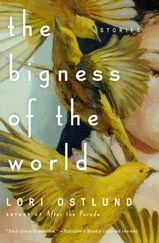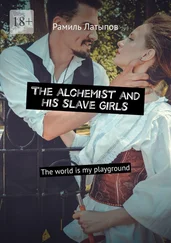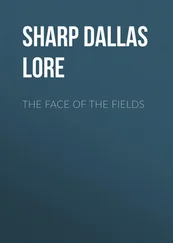Flemish painting loves this world of surfaces. It aims to do them to perfection, as if getting them exactly right was the guarantee of some higher truth than material reality. And this must have seemed the case nearly six hundred years ago when these painters very suddenly began creating images of God’s universe so persuasive to the eye, all the way from the broad rays of the sun to the microcosmic fire inside a diamond, that contemporary viewers thought they could hardly have been made by human hand. A saint’s golden cope and all the tinsel-bright threads running through it; a carpet and all its individual woollen staples, and then every thread in each: surely this must be some kind of God-given miracle, for such minutiae couldn’t possibly be rendered by an ordinary mortal with a paintbrush. The old strain of incredulity rings true even today since one still marvels to see such immaculate illusions of life unfolding from the nearest dewdrop to the furthest range of mountains. And if Flemish art aspires to a visibility that amazes then the work of Jan Van Eyck goes even further, rising to a kind of godly omniscience – all you can see and more, as much of the world as can be gathered into the little compass of a painting, above, below and beyond. Van Eyck developed a way of expanding the field of vision by using reflections to show what was just out of sight as well as what was beyond the picture altogether: the entire skyline of a distant town reflected in the gleaming helmet of an archer, an offstage martyrdom in a heretic’s breastplate. The armour will be super-real, so like the thing itself as to baffle belief; the reflections will make visible even more of the world.
When it comes to reality, Jan Van Eyck is the supreme master. His art is so lifelike it was once thought divine. But he does not simply set life before us as it is – an enduring objection to realism, that it is no more than mindless copying – he adjusts it little by little to inspire awe at the infinite variety of the world and our existence within it, the astonishing fact that it contains not just all this but each of our separate selves. What is more, Van Eyck makes this point in person, and not once but several times with a humility that amounts to a trait. Yet experts barely seem to notice the human aspects of these incidental appearances, or the startling solo portrait he left of himself, for arguing about whether they can be deemed self-portraits in the first place. This is one of the disadvantages of being a pioneer; Van Eyck is too early to assimilate. Because there is no flourishing tradition of self-portraiture in Europe yet, he is not allowed to be painting himself. Clearly there must have been great self-portraitists before him when one considers how much art of the period is lost (some estimate that only a quarter of Renaissance art survives) but even quite serious art historians seem to imagine that nobody could produce a sophisticated self-portrait without a sophisticated mirror, or that nobody had a self before its supposed invention later in the Renaissance and that Van Eyck is only fooling about with figments. But his art argues against such primitive and arrogant notions and does so with characteristic grace. Look at the way that Van Eyck finesses his own image into a great altarpiece such as The Madonna and Child of Canon van der Paele by way of drawing attention to the fact that anyone who looks at a bit of fiercely polished metal, no matter how grey the day, is pretty much bound to see himself.
The Madonna and Child are sitting in a space so cramped there is hardly room for their visitors: St Donatien on the left in a blue and gold cope, St George on the right in a cacophonous suit of bronze armour. George is a bumptious figure, disturbing the peace and treading clumsily on the vestments of the old cleric kneeling beside him, namely Canon van der Paele, who has commissioned the picture and is even now being introduced to the Virgin.
The point of the picture ought to be the relationship between these four large adults but there are so many other pressing attractions. The heavy eye-glasses in the Canon’s hand, the circular ventricles of the windows, the individual design of every single chequerboard tile; above all the stupendous patterned carpet that begins beneath the Virgin, folds its way down the ceremonial steps and stretches right out of the picture as if to meet the viewer’s own feet, a sensation fully underwritten by the staggering depiction of this woven stuff, too thick to make perfect right-angle bends down each step, its weave stiffening here, flattening there, casting the tiniest of shadows within in its own texture: infinitesimal.
Van Eyck seems to have started out as a miniaturist and part of his achievement is to sustain that technique on a larger scale without any loss of effect so that his pictures never disintegrate into smaller catalogues of detail; you can be densely absorbed in that carpet without losing your sense of the circulation of air, the passage of light or the reflections that keep the space flutteringly alive. St George doffs a helmet ribbed like a conch, its volutes reflecting the mother and child over and again; and the entire scene, from the red granite column behind him to the cold Northern light of the window, is repeated in his breastplate and shield. But there is one reflection that has no identifiable source in the picture because the original stands outside it – a tiny figure in a red turban, one arm raised to apply a brushstroke.
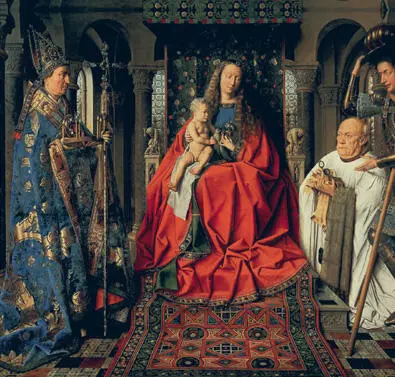
Madonna and Child with Canon Georg van der Paele , 1436 Jan van Eyck (c. 1390–1441)
To describe this self-portrait as modest would be an understatement; it is not even the size of a match. Only in a reproduction fully as large as the painting itself – approximately six feet by four – would anyone be able to see it in context. The hiding place is what gives it away, as well as the pose, for to be reflected in the saint’s angled shield at this size the man in the turban would have to be standing back from the picture, near the centre, approximately where we stand to look. And what did the artist see when he stood there? Not the armour, of course, but the wet oil paint itself in which, working close, he must have been hazily reflected.
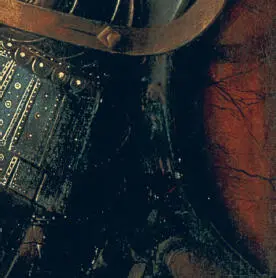
Detail of Madonna and Child with Canon Georg van der Paele , 1436 Jan van Eyck (c. 1390–1441)
The conceit is that the armour he has painted is so sparklingly real Van Eyck can see himself in it, and perhaps there was an actual suit of armour in the workshop, a material object to summon in all its hard glory. But there were no saints and Canon van der Paele clearly never met Mary; the artist is making up his world. There is the fictional scene, the wily old canon sucking up to the mother of God, and there is the miraculous illusion of reality that abets it; between the two, slipped into the surface of the picture, is a reflection of the truth and reality outside it: the painter’s side of the story.
Jan Van Eyck was probably born in 1390, possibly in Maastricht. He worked mainly in Bruges as court painter to Philip, Duke of Burgundy, who sent him on at least two ambassadorial missions by sea, voyages so weather-pitched the ships were forced to dock in England for safety. First he painted Isabella of Spain as a potential bride for the Duke and then he painted Isabella of Portugal; neither portrait survives, but the Portuguese Isabella won the contest.
Philip treasured Van Eyck’s friendship as well as his art, giving him vast bonuses and expensive gifts, becoming godfather to his daughter and supporting his widow. That he prized their conversation is apparent from an outraged letter to some of the painter’s clients who were withholding payments, an insult that the Duke takes personally, declaring he will ‘never find a man equal to [Van Eyck’s] liking, nor so outstanding in his art and science’. 1Not just art but science as well, meaning knowledge of mathematics, optics, astronomy, geometry, all the learning that enriched Van Eyck’s painting and no doubt his table-talk, but possibly something else too: the invention of oil paint itself.
Читать дальше



